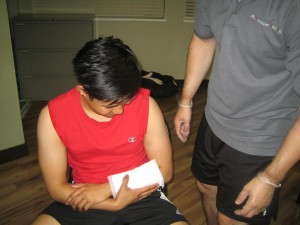After an individual undergoes a surgical procedure, he/she is likely to end up with an incision or scar to take manage at home. How the individual manages or cares for the incision can mean the difference between correct healing and ending up with an unpleasant scar. The surgery wound that is currently healing that opens up again or becomes infected slows down the healing and puts the individual at risk for a surgery scar. Always make sure that the surgical incision stays clean and sterilized while carefully following the instructions given by the doctor to maintain the best healing of the surgery scar as possible.
Doctor’s instructions
Always follow the instructions given by the doctor for proper scar care after the surgical procedure. Depending on the location and the circumstances of the surgery, the instructions for the surgical scar care might vary as well as application of the creams or even the intake of orally-taken antibiotics to help prevent infection from developing.
The doctor will provide written instructions. The individual can hang the instructions where he/she can see it while caring for the surgical scar to review it often.

Cleaning the scar
You have to clean the scar on a daily basis. Make sure that the individual will not scrub or rub on the scar. The best way to clean the surgical scar is to work up a good lather using an antibacterial soap and pat the suds over the scar. Leave the suds in place for 15-20 seconds and rinse the soap away. After thorough cleaning, pat the area dry using a towel.
Changing the dressings
You have to change the dressings as often as the doctor instructed. When changing the bandages, you have to wash your hands carefully using antibacterial soap before touching the scar.
Peel away slowly the soiled dressing and make sure that you are not removing the skin while peeling. In case the skin tags along with the dressing, you have to wet the bandage and try again. You have to replace it with a clean dressing and secure it over using a first aid tape.
Antibiotic ointment
You can apply an ointment only when instructed by the doctor. While an antibiotic ointment can help prevent the development of infection, in some cases it can also slow down the healing process. If an ointment is needed, the doctor will likely prescribe one and provide instructions on how and when to use it.
What are the signs of infection?
A doctor should be consulted if there are indications of infection. Always bear in mind that an infection can spread and slow down the healing process. The signs and symptoms include pain, redness or drainage of yellowish fluid. It is also recommended to consult a doctor once the incision opens up. This would require stitches or staples to close the wound to promote better healing and minimize the risk for scarring.
